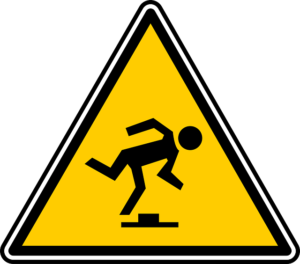
Understanding premises liability claims
The term “premises liability” refers to the area of the law dealing with personal injury occurring on someone else’s property. Property owners have certain legal obligations to those individuals who come onto their property. These obligations generally include keeping the premises safe. When these obligations are not met, and personal injury results, the property owner may be held liable for those injuries.
Missouri resident injured in trip-and-fall accident
A 76-year-old Missouri resident was traveling back home with his family when they stopped at a Mississippi fast food restaurant. After being served his food, as the man was walking back to his table, he tripped over the leg of a highchair that the restaurant provided for customers. The high chair was protruding into the walkway. He fell and suffered an injury to his face and shoulder as a result. He then heard employees discussing why the high chair was in that location and a supervisor instructing them to move the chair.
Personal injury lawsuit initially dismissed
The injured man filed a personal injury lawsuit against the restaurant chain, the franchise owner and the manager of that particular restaurant. However, the trial court dismissed the case after it found there was no evidence that the high chair was a dangerous condition or that any alleged danger was obvious. More importantly, the trial court determined there was no evidence that the employees of the restaurant had either actual or constructive knowledge of the danger posed by the high chair. In fact, the trial court held that the presence of a high chair was not hidden, but would be a normal occurrence in that restaurant and is a condition a customer should expect.
Evidence to support a finding of constructive knowledge
A frequent patron of the restaurant witnessed the fall and testified that she was not at all surprised by the incident because the high chairs were kept in a location where they were basically obscured by a partial wall. She also testified that the legs of the high chair protruded farther into the walkway than the tops, which would have made the chairs obvious to someone walking by.
This witness also testified that, during her frequent visits to the restaurant, she saw many customers stumble over the high chairs in that same location and she complained to store employees about the hazard on several occasions before the Missouri resident fell. The store did not dispute the witness’s testimony.
The appellate court disagreed and reinstated the case
The Missouri resident appealed the trial court’s dismissal of his case. The Mississippi supreme court disagreed with the dismissal, finding that there were many disputes of fact that should be decided by a jury. In particular, the appellate court found that there was sufficient evidence for a jury to find that the restaurant had either actual or constructive knowledge of the danger the high chairs created in that location but failed to remedy the danger or warn customers. The appellate court also found that the trial court was wrong to decide that the high chairs were a normal condition in the restaurant. That was a fact to be decided by the jury.
Did the restaurant destroy evidence?
Another issue that arose in this case was whether the restaurant may have destroyed evidence that would have been relevant to the lawsuit. Although the restaurant employees indicated that there was a video of the fall, it had allegedly been erased inadvertently. There is a legal principle known as spoliation of evidence that says, if evidence is intentionally or negligently destroyed after a lawsuit has been filed, then the jury can be instructed that they can assume the evidence would have been favorable to the injured party in the case. In other words, if the video was intentionally destroyed, the jury could assume that whatever the video contained, it would have been useful in proving the plaintiff’s claims. If you have questions about this legal principle, contact our Joplin personal injury lawyer.
If you have questions regarding trip-and-fall accidents or any other personal injury matters in Arkansas or Missouri, please contact the Cottrell Law Office for a free consultation. You can contact us either online or by calling us toll-free at (888) 433-4861.


